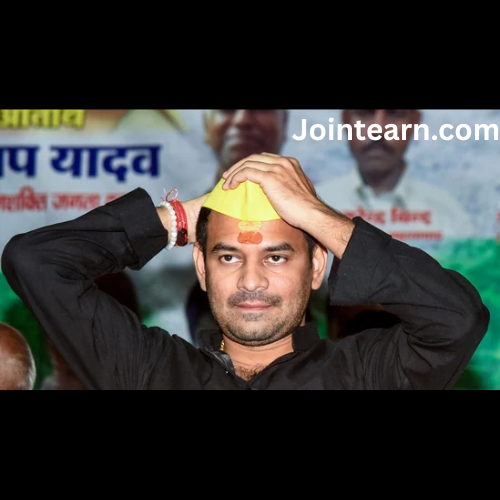Punjab Police Deputy Inspector General (DIG) Harcharan Singh Bhullar has been arrested by the Central Bureau of Investigation (CBI) in a major bribery case that has sent shockwaves across the state. The arrest comes following allegations that Bhullar demanded ₹8 lakh from a scrap dealer, Akash Bhatta, in return for ensuring no police action against his business. However, the probe revealed far more extensive corruption, including a massive recovery of cash, gold, luxury vehicles, and firearms from Bhullar’s office and residence.
Bribery Allegations Surface
The case emerged when scrap dealer Akash Bhatta filed a complaint with the CBI on October 11, 2025, alleging that Bhullar had demanded bribes through a middleman named Kirshanu. Bhullar, a 2007-batch IPS officer and the DIG of the Ropar range since November last year, reportedly sought not only a one-time payment of ₹8 lakh but also “sewa-paani,” a recurring monthly bribe, to prevent police action against Bhatta in relation to a 2023 FIR.
The complaint described Bhullar’s threats of falsely implicating Bhatta in criminal cases if the bribe demands were not met, a common form of coercion in such corruption schemes.
WhatsApp Call Exposes the DIG
The investigation by the CBI’s anti-corruption branch, led by Sub-Inspector Sachin Singh, uncovered a critical piece of evidence: a recorded WhatsApp conversation between Bhullar and his middleman Kirshanu. In the conversation, Bhullar is clearly heard instructing, “8 fadne ne 8 (Collect ₹8 lakh from him).” He further said, “Jinna denda nal nal fadi chal, ohnu kehde 8 kar de pura (Collect whatever he gives and ask him to give ₹8 lakh in total).”
The recording also revealed instructions for monthly bribes, with Bhullar directing Kirshanu to tell the complainant that he had not paid bribes for August and September. This conversation provided concrete proof of the ongoing bribery scheme. The mobile number used in the WhatsApp conversation was verified by the CBI as belonging to Bhullar, substantiating the direct link between the DIG and the bribery demands.
CBI Trap and Arrest
The CBI orchestrated a sting operation at Chandigarh’s Sector 21, where a person was caught red-handed while delivering ₹8 lakh on behalf of DIG Bhullar. During the controlled trap, Bhullar acknowledged the bribe over a call and instructed both the middleman and the complainant to come to his office. Following this, the CBI apprehended Bhullar from his office and arrested Kirshanu at Chandigarh’s Sector 9D market.
A formal case has been registered under Sections 7 and 7A of the Prevention of Corruption Act and Section 61(2) of the Bharatiya Nyaya Sanhita. The investigation into Bhullar’s activities is ongoing, with CBI teams examining his past actions and financial dealings.
Massive Recovery at Office and Residence
Following the arrest, the CBI conducted simultaneous raids at Bhullar’s office in Mohali and his private residence in Chandigarh’s Sector 40. The searches yielded staggering recoveries, including:
- ₹5 crore in cash
- 1.5 kilograms of gold
- Luxury vehicles, including a Mercedes and an Audi
- 22 luxury watches
- 40 liters of imported liquor
- Firearms, including a pistol, revolver, double-barrelled gun, airgun, and ammunition
- Locker keys and property documents
The recovery of these assets indicates that the DIG had been involved in extensive financial misconduct beyond the initial ₹8 lakh bribe case.
Bhullar’s Career and Past Controversies
Harcharan Singh Bhullar is the son of former Punjab Director General of Police Mehal Singh Bhullar. Over the course of his career, he has served in multiple senior positions, including DIG of the Patiala Range, joint director of the vigilance bureau, and senior superintendent of police in Jagraon, Mohali, Sangrur, Fatehgarh Sahib, Hoshiarpur, and Gurdaspur.
Bhullar had previously come under public scrutiny for his leadership style. He headed the Punjab Police Special Investigation Team (SIT) that questioned Shiromani Akali Dal (SAD) leader Bikram Singh Majithia on drug smuggling charges, an assignment that generated significant media attention. His tenure in various roles was often described as controversial, with allegations of mismanagement and heavy-handed tactics leading to criticism from both political and civil society quarters.
Implications of the Case
The arrest of a high-ranking police officer like Bhullar has highlighted ongoing concerns regarding corruption and abuse of power within law enforcement in Punjab. The case also underscores the significance of technological evidence, such as recorded WhatsApp calls, in uncovering bribery and other financial crimes.
The CBI’s decisive action and the massive recovery of assets suggest that the investigation could have far-reaching implications, potentially prompting a review of other cases under Bhullar’s jurisdiction and scrutiny of his financial dealings over the years. The involvement of a middleman, the structured demands for recurring bribes, and the scale of the recovered wealth indicate systemic corruption, which has raised public and media concerns about accountability within the police hierarchy.
Public Reaction and Legal Proceedings
Public reaction to the case has been one of shock and outrage, given Bhullar’s senior position and the apparent brazenness of his actions. The CBI continues to investigate, with potential charges of criminal misconduct, corruption, and possession of unaccounted wealth being examined. Authorities have indicated that further arrests or actions may follow as the investigation unfolds.
The case also reinforces the need for transparency and stringent anti-corruption measures in law enforcement. It serves as a stark reminder that even senior officers can be held accountable under the law when caught engaging in illegal activities.
In conclusion, the arrest of Punjab DIG Harcharan Singh Bhullar over the ₹8 lakh bribe demand and the subsequent uncovering of a massive cache of wealth highlights significant issues of corruption and abuse of power within the police force. With the CBI continuing its probe, this case is likely to remain in the public eye as it develops, serving as a benchmark for accountability and enforcement of anti-corruption laws in India.


Leave a Reply